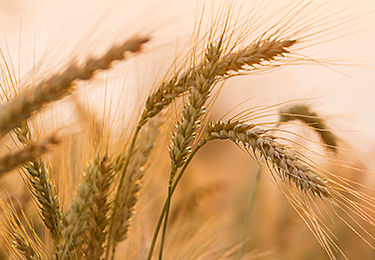
Watchlist
You can print out your watchlist and use it as a reminder for your purchase in the pharmacy.
Your watchlist currently contains no products.
Print


Common barley
Common barley
Botanik
Barley (hordeum vulgare) belongs to the grass family (gramineae). It is found, above all, in moderate climates, but it has spread further north and south than rye, for example, and thrives both in the sub-tropics and on high ground. There are two distinctly different forms of barley – two-rowed with large grains and the multi-rowed with 4–6 rows of mostly smaller grains. Many types of barley have a short stalk length and overhanging ears and the covering glumes have very long beards. The beards are equipped with barbs. They serve the purpose of natural dissemination by getting caught in the coats of animals as they roam past and are carried further in this way.
mehr
Geschichte
None of the well-known cereal types such as wheat, rye, barley and oats actually originates from Central Europe. This means these cereals did not belong here until after human beings began cultivating fields. However, it has been possible to prove that barley was indeed a field crop in the oldest Neolithic age along with emmer and one-grained wheat. Thus it seems to have been one of the first to have been subjected to cultivation. In North Germany barley was even the only crop in some places during this period. In the Middle Ages rye then became the main bread crop and barley, in general, only played a subordinate role. In climatically cooler regions, however, barley retained its great significance.
mehr
Inhaltsstoffe
As well as carbohydrates, proteins, mineral substances and fibres, mature barley also contains approx. 1.8–2.3% fat. If this fat is extracted carefully from the barley, then it contains more tocotrienole (vitamin E) than every other oil.
mehr
Hinweise/Besonderheiten
Vitamin E
Vitamin E is formed solely from plants. Vitamin E occurring in such a natural way consists of up to eight different compounds. These are called tocopheroles and tocotrienoles. Here the efficacy of the compounds varies. D-alpha-tocotrienole which occurs naturally has an anti-oxidative effect 50 times stronger than D-alpha-tocopherole.
Natural and synthetic vitamin E
Natural vitamin E has an extremely complex structure, which can never by copied exactly by the chemical synthesis methods.
The most important function which vitamin E takes over in the human body is protection of the unsaturated fatty acids from oxidation, i.e. from becoming “rancid”. If fatty acids are damaged, for example by oxidative processes, this can accelerate the ageing process of the cells. This protective function is also especially important for the sensitive cell membranes. For these contain a lot of unsaturated fatty acids and with damaged membranes they can no longer fulfil their tasks properly.
mehr
Produkte mit Common barley
Vitamin E Gerstenöl Granulat
Vitamin E barley oil granules
